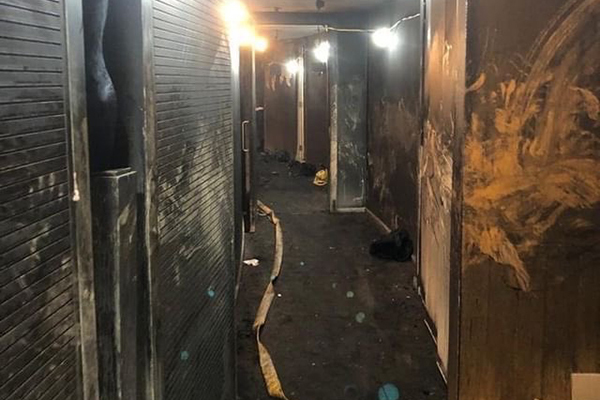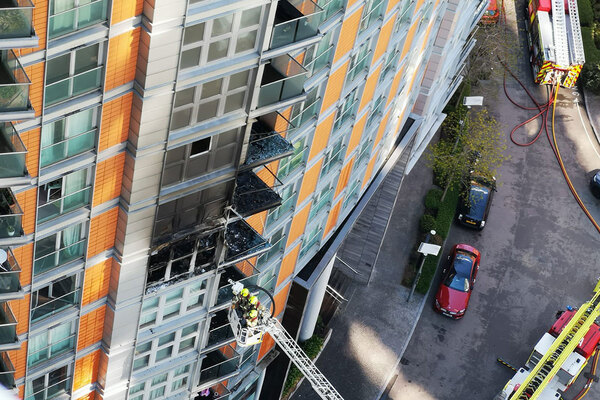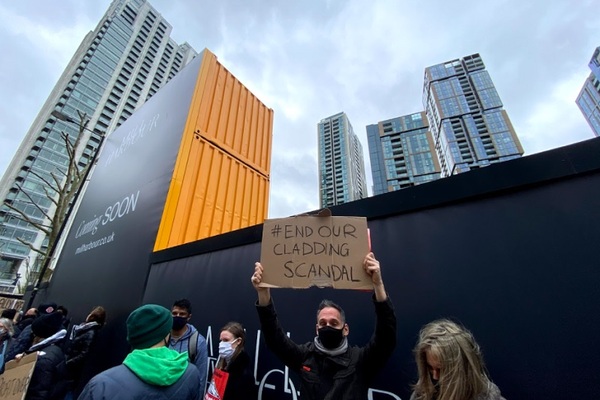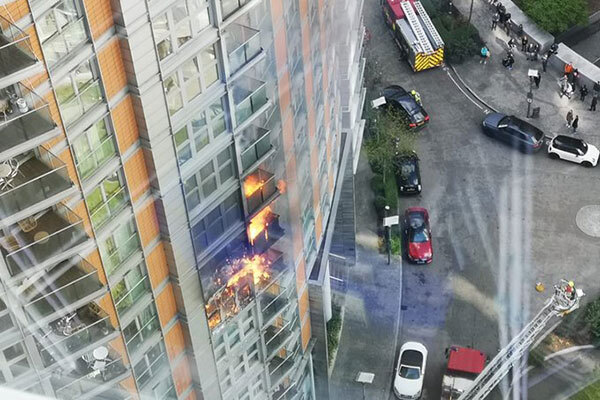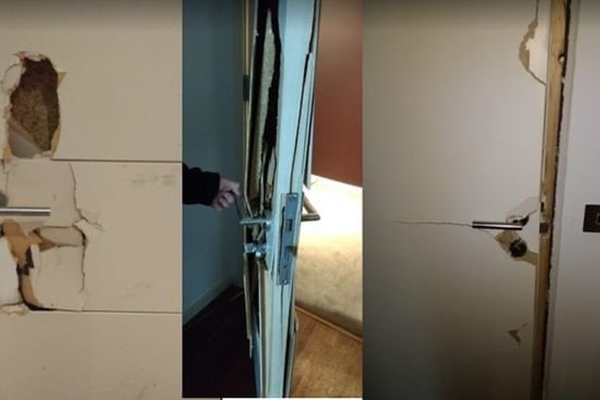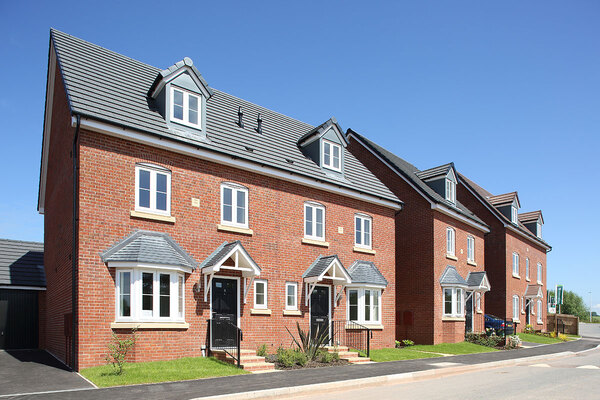You are viewing 1 of your 1 free articles
New Providence Wharf fire: smoke detection system in block failed during fire
The smoke detection system installed in the New Providence Wharf block, which was hit by a devastating fire last week, failed when smoke began to fill the building, Inside Housing can reveal.
The fire broke out last Friday morning, spreading across multiple floors and leading to dozens of residents being forced to evacuate. Two people were hospitalised, while a further 42 – including four children – were treated for smoke inhalation and shock at the scene.
Ballymore told residents that the smoke detection system had failed, meaning that the doors in the communal area – crucial to the fire compartmentation of the building and containing fire and smoke – did not close.
As a result, smoke was allowed to fill the communal areas as residents attempted to escape, reaching as high up as the 18th floor.
Residents were also told that it was believed the fire may have started in a fuse box in one of the flats, but the London Fire Brigade (LFB) has yet to complete its investigation into the fire, which is expected in a few weeks.
The New Providence Wharf development is one of a handful of private residential blocks in England that has yet to start work to remove the Grenfell-style aluminium composite material (ACM) cladding from its facade, nearly four years since the tragedy that killed 72 people.
Ballymore said that enabling works to start removal had started two weeks before the fire. It also said that its initial internal investigations found that the ACM on the building played no role in facilitating or spreading the fire.
Inside Housing spoke to several residents on the day of the fire who described how they were forced to evacuate after being alerted about the fire by fellow residents. Of the residents Inside Housing spoke to, only one said that they were evacuated by a fire marshal.
Many residents said that they heard no alarm or air horn and were forced to evacuate themselves. Iman Anais, who lived in the block next to the one where the fire broke out, said: “There was no alarm in the building that went off. No one told us to evacuate. No one knew anything.”
Just a month before the fire, Ballymore informed residents that it would be increasing the frequency of the waking watch in the block and that in the event of a fire, waking watch operatives would sound an air horn. Residents have said they are collectively paying £47,000 a month for waking watch services.
In a statement to Inside Housing, Ballymore said: “Our on-site team commenced a waking watch evacuation immediately after the fire began. This waking watch successfully alerted and evacuated a significant number of residents across multiple floors within Block D before the London Fire Brigade arrived and took command of the evacuation process.”
Owners of the flats on the eighth floor, where the fire started, have been told that it could take around six months for them to return to their homes, while some of the flats above and below them should be able to return in three months.
The LFB is currently carrying out checks to ensure other apartments are safe to return to, with the return date expected to be next week.
Residents have been put in temporary accommodation paid for by Ballymore, and the developer is providing residents with an allowance for food and essentials, and office space for residents who work from home.
Ballymore did not respond directly to a question from Inside Housing asking whether it will be providing leaseholders in the block with any compensation or whether the company will fully cover the repair work on the building.
It said: “Ballymore continues to provide comprehensive support to residents, including nearby hotel accommodation and workspace to residents who are not yet able to return to their properties.”
Sign up for our fire safety newsletter
Already have an account? Click here to manage your newsletters
